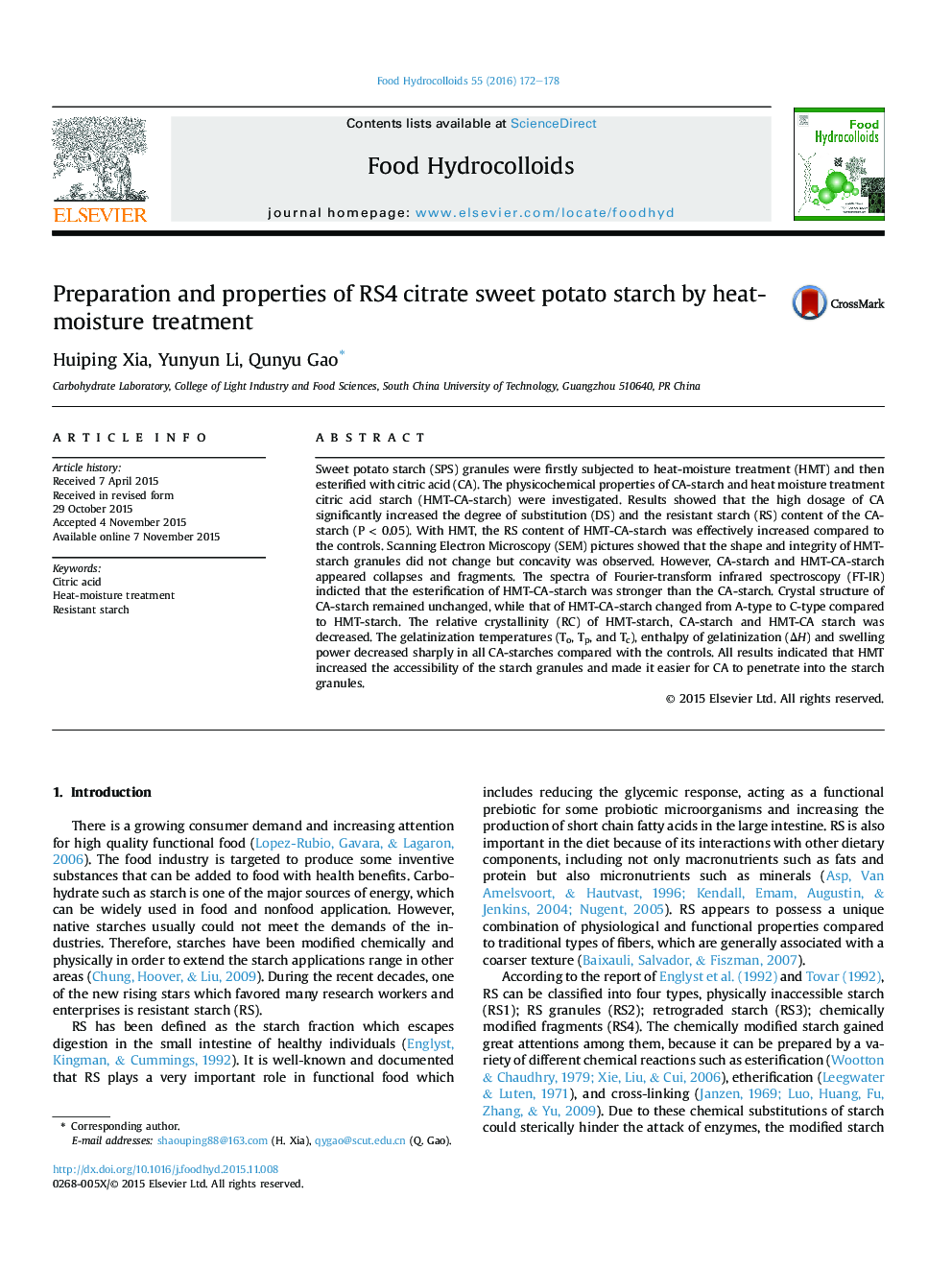| Article ID | Journal | Published Year | Pages | File Type |
|---|---|---|---|---|
| 603666 | Food Hydrocolloids | 2016 | 7 Pages |
•Starch was preprocessed by HMT, then treated with citric acid to produce RS.•Pretreating the starch can increase the DS and RS content of citrate starch.•After citric acid modification, the crystalline type of HMT-starch changed from A-to C-type.
Sweet potato starch (SPS) granules were firstly subjected to heat-moisture treatment (HMT) and then esterified with citric acid (CA). The physicochemical properties of CA-starch and heat moisture treatment citric acid starch (HMT-CA-starch) were investigated. Results showed that the high dosage of CA significantly increased the degree of substitution (DS) and the resistant starch (RS) content of the CA-starch (P < 0.05). With HMT, the RS content of HMT-CA-starch was effectively increased compared to the controls. Scanning Electron Microscopy (SEM) pictures showed that the shape and integrity of HMT-starch granules did not change but concavity was observed. However, CA-starch and HMT-CA-starch appeared collapses and fragments. The spectra of Fourier-transform infrared spectroscopy (FT-IR) indicted that the esterification of HMT-CA-starch was stronger than the CA-starch. Crystal structure of CA-starch remained unchanged, while that of HMT-CA-starch changed from A-type to C-type compared to HMT-starch. The relative crystallinity (RC) of HMT-starch, CA-starch and HMT-CA starch was decreased. The gelatinization temperatures (To, Tp, and Tc), enthalpy of gelatinization (ΔH) and swelling power decreased sharply in all CA-starches compared with the controls. All results indicated that HMT increased the accessibility of the starch granules and made it easier for CA to penetrate into the starch granules.
Graphical abstractThe relationship between DS and RS content.Figure optionsDownload full-size imageDownload as PowerPoint slide
